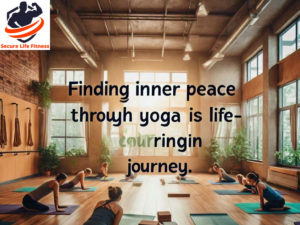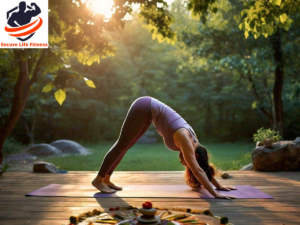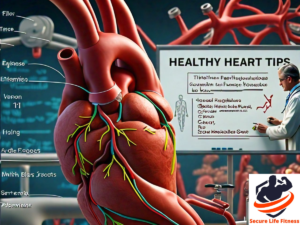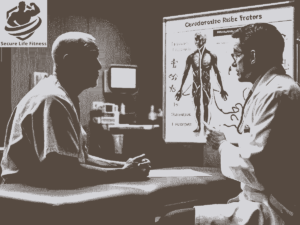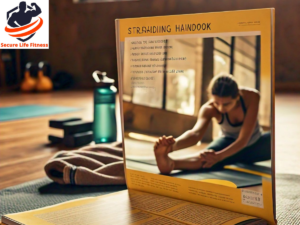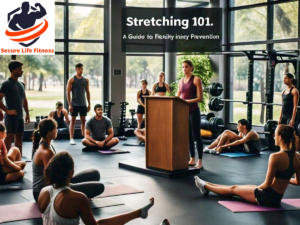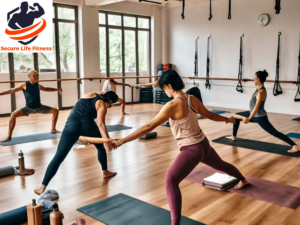Table of Contents
ToggleYoga Principle
Yoga is more than just a physical practice; it’s a holistic approach to wellness that encompasses body, mind, and spirit. The yoga principle is rooted in the belief that these three aspects of our being are interconnected and that by aligning them, we can achieve balance, harmony, and overall well-being. In this blog post, we’ll delve into the philosophy of yoga and explore how the practice can help us align our body, mind, and spirit.
The Three Pillars of Yoga
Body (Physical)
- Physical postures (asanas) to strengthen and flexibilize the body
- Breathing techniques (pranayama) to control and regulate the breath
- Physical discipline to prepare the body for meditation
Mind (Mental)
- Concentration and focus techniques to quiet the mind
- Meditation and mindfulness practices to cultivate awareness
- Self-reflection and introspection to understand the mind
Spirit (Spiritual)
- Connection to something greater than ourselves
- Cultivating compassion, empathy, and kindness
- Examining the significance and intent of existence
The Eight Limbs of Yoga
- Yamas (Universal Ethics)
- Ahimsa (non-violence)
- Satya (truthfulness)
- Asteya (non-stealing)
- Brahmacharya (moderation)
- Aparigraha (non-possessiveness)
- Niyamas (Personal Observances)
- Sauca (cleanliness)
- Santosa (contentment)
- Tapas (discipline)
- Svadhyaya (self-study)
- Ishvara Pranidhana, or giving over control to a greater force
- Asanas (Physical Postures)
- Physical practice to prepare the body for meditation
- Pranayama (Breathing Techniques)
- Controlling breathing to ease mental tension
- Pratyahara (Sense Withdrawal)
- Withdrawing the senses from external stimuli
- Dharana (Concentration)
- Focusing the mind on a single point
- Dhyana (Meditation)
- Sustained concentration without distraction
- Samadhi (Union with the Divine)
- Merging with something greater than ourselves

The Advantages of Spirit, Mind, and Body Alignment
- Better strength, balance, and flexibility in terms of physical health
- Mental Clarity: Reduced stress, anxiety, and depression
- Spiritual Growth: Increased sense of purpose, meaning, and connection
The Yoga Principle in Daily Life
- Body: Taking care of our physical health through regular exercise, healthy eating, and adequate sleep
- Mind: Practicing mindfulness, meditation, and self-reflection to cultivate mental clarity and focus
- Spirit: Connecting with something greater than ourselves through prayer, meditation, or service to others
Overcoming Obstacles
- Physical: Injuries, illnesses, or physical limitations
- Mental: Stress, anxiety, or depression
- Spiritual: Feeling disconnected or lacking purpose
The Role of the Guru or Teacher
- Guiding us on our yoga journey
- Providing wisdom and support
- Helping us stay on the path to self-realization
The Importance of Community
- Practicing with others for support and motivation
- Sharing experiences and knowledge
- Building a sense of belonging and connection
The Yoga Principle and Modern Life
- Applying yoga principles to our daily lives
- Finding balance in a fast-paced world
- Making use of yoga as a tool for self-improvement and transformation
The Science Behind Yoga
- Physiology: How yoga affects the body’s systems and organs
- Neurology: How yoga impacts the brain and nervous system
- Psychology: How yoga influences mental health and well-being
The Different Yoga Styles
- Hatha: A traditional and classical approach to yoga
- Vinyasa: A flowing and dynamic style of yoga
- Ashtanga: A fast-paced and physically demanding style of yoga
- Iyengar: A style of yoga that emphasizes precision and alignment
- Kundalini: A style of yoga that focuses on energy and spiritual growth
Yoga for Specific Needs
- Yoga for Beginners: A gentle and introductory approach to yoga
- Yoga for Stress Relief: A relaxing and calming approach to yoga
- Yoga for Back Pain: A therapeutic and restorative approach to yoga
- Yoga for Pregnancy: A safe and nurturing approach to yoga
- Yoga for Children: A fun and playful approach to yoga
The Business of Yoga
- Yoga Studios: How to find a studio that’s right for you
- Yoga Teachers: How to find a qualified and experienced teacher
- Yoga Teacher Training: How to become a certified yoga teacher
- Yoga Products: How to choose the right yoga props and accessories

The Future of Yoga
- Trends: The latest developments and trends in the yoga world
- Research: The latest scientific research on the benefits of yoga
- Globalization: How yoga is spreading globally and its impact on different cultures
- Technology: How technology is changing the way we practice yoga
Yoga and Mindfulness
- The Connection Between Yoga and Mindfulness
- The Way Yoga Develops Mindfulness
- The Benefits of Mindfulness in Yoga
Yoga and Meditation
- The Difference Between Yoga and Meditation
- The Benefits of Combining Yoga and Meditation
Yoga and Breathing
- The Importance of Breathing in Yoga
- The Science Behind Yoga Breathing
- How Yoga Breathing Can Improve Overall Health
Yoga and Flexibility
- How Yoga Increases Flexibility
- The Importance of Flexibility in Yoga
- Tips for Increasing Flexibility Through Yoga
Yoga and Strength
- How Yoga Builds Strength
- The Importance of Strength in Yoga
- Tips for Building Strength Through Yoga
Yoga and Balance
- How Yoga Improves Balance
- The Importance of Balance in Yoga
- Tips for Improving Balance Through Yoga
Yoga and Alignment
- The Importance of Alignment in Yoga
- How to Improve Alignment in Yoga
- Tips for Maintaining Proper Alignment in Yoga
Yoga and Safety
- Common Yoga Injuries and Preventative Measures
- Yoga Safety Tips for Beginners
- Adapting Yoga Pose for Safety
Conclusion
Yoga is a complex and multifaceted practice that offers numerous benefits for body, mind, and spirit. Whether you’re a seasoned practitioner or just starting out, yoga has something to offer everyone. By understanding the history, philosophy, and science behind yoga, we can deepen our practice and appreciate its timeless wisdom.





